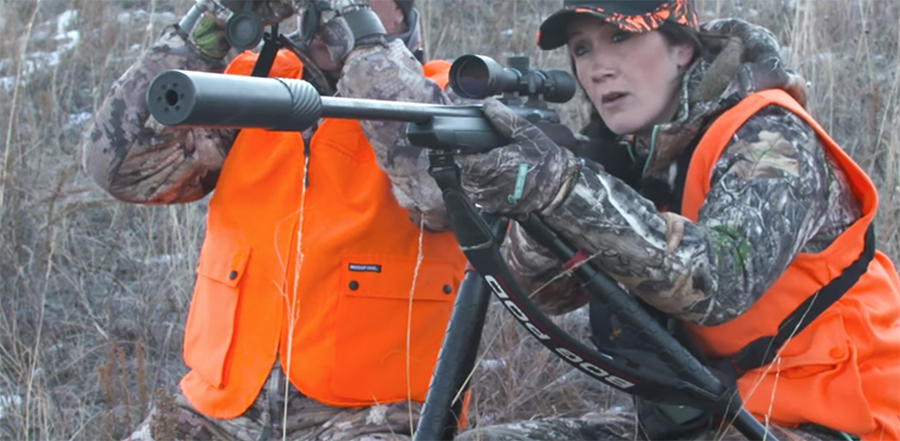Winchester’s sales for the second quarter were $192.6 million compared to $164.9 million in the second quarter 2019, a gain of 16.8 percent, according to the quarterly report of its parent, Olin Corp.
The increase in sales was primarily due to higher commercial ammunition sales. Second-quarter 2020 segment earnings were $16.0 million compared to $10.1 million in the second quarter of 2019. The increase in segment earnings was primarily due to higher commercial ammunition volumes and pricing which were partially offset by $3.8 million of transition costs related to the U.S. Army Lake City ammunition facility contract. Winchester’s second-quarter 2020 results included depreciation and amortization expenses of $4.7 million compared to $5.1 million in the second quarter of 2019.
Companywide, Olin reported a net loss was $120.1 million, or 76 cents per diluted share, which compares to the second quarter 2019 reported net loss of $20.0 million, or 12 cents per diluted share. Second-quarter 2020 adjusted EBITDA of $71.5 million excludes depreciation and amortization expense of $136.5 million, information technology integration costs of $20.4 million, and restructuring charges and other costs of $5.5 million. The second-quarter 2019 adjusted EBITDA was $204.6 million. Sales in the second quarter of 2020 were $1,241.2 million compared to $1,592.9 million in the second quarter of 2019.
Olin is also a vertically-integrated global manufacturer and distributor of chemical products through its Chlor Alkali Products and Vinyls and Epoxy businesses.
John Fischer, Chairman, President and CEO, said: “Second quarter 2020 sales for the combined Chlor Alkali Products and Vinyl and Epoxy businesses declined year-over-year by approximately 27 percent. The sales decline reflects weaker customer demand and a higher level of planned maintenance turnaround activity which occurred early in the second quarter. Overall, chemical business sales increased each month during the quarter from the April low point and have continued to increase during July.
“The Chlor Alkali Products and Vinyls business experienced weaker broad-based customer demand from almost all end-use chemical customers in the second quarter of 2020 compared to the first quarter of 2020. Shipments to our urethane customers were particularly weak and declined by approximately 44 percent compared to the first quarter of 2020. During the second quarter of 2020, caustic soda pricing increased by approximately 8 percent in Olin’s system when compared to the first quarter of 2020, while ethylene dichloride pricing sequentially declined approximately 50 percent. In the third quarter of 2020, we expect sequential improvement in both caustic soda and ethylene dichloride pricing. We also expect the volume in the third quarter of 2020 to improve from the second quarter 2020 levels primarily due to lower maintenance turnaround activity.
“The Epoxy business experienced weaker product demand from European and North American automotive, oil and gas and industrial coatings customers in the second quarter of 2020 compared to the first quarter of 2020. The second quarter 2020 epoxy resin shipment volumes decreased approximately 30 percent from both the first quarter of 2020 and the second quarter of 2019. The sequential decline in Epoxy segment earnings was attributable to lower volumes. Lower operating costs offset the higher planned maintenance turnaround costs.
“For the fourth consecutive quarter, the Winchester business experienced a year-over-year improvement in segment earnings. Commercial ammunition demand remained elevated throughout the second quarter of 2020. We expect this higher level of ammunition demand to continue at least through the remainder of 2020.
“During the second quarter of 2020, Olin completed several refinancing actions, which enhanced our liquidity. These actions provide Olin the flexibility to navigate the current economic conditions. These refinancing actions complement our efforts to reduce our working capital, minimize spending and manage our balance sheet to maximize financial flexibility. The refinancing actions allowed us to make the required ethylene payment to the Dow Chemical Company (Dow) during the quarter under favorable terms.
Outlook
“The Chlor Alkali Products and Vinyl and Epoxy businesses remain challenged by the current economic conditions. Visibility around future demand continues to be limited and customer order patterns remain volatile. The combination of lower maintenance turnaround costs, improved sales volumes, and higher product pricing are forecast to generate a third-quarter 2020 adjusted EBITDA that is more than double the second quarter 2020 levels. June and July activity levels support this outlook.
“During 2020, several initiatives are expected to create a long-term improvement in cash flow:
- Refinancing of a portion of the high-cost bonds assumed during the 2015 Dow Chlorine Products acquisition, which become callable in late-2020, is expected to reduce interest expense by approximately $30 million annually;
- Winding down of the multi-year information technology project to integrate the acquired Dow Chlorine Products businesses is expected to reduce annual spending by approximately $110 million, split between capital and expense. The wind-down of the project will begin in the fourth quarter;
- Olin’s vinyl chloride monomer contract is transitioning from the toll manufacturing arrangement that has been in place since the 2015 Dow acquisition, to a direct customer sale agreement, beginning on January 1, 2021. The new vinyl chloride monomer contract is expected to improve annual adjusted EBITDA by approximately $50 million to $75 million; and
- The multi-year Winchester contract to operate the U.S. Army Lake City ammunition facility in the fourth quarter 2020 is expected to increase Winchester’s annual revenue by $450 million to $550 million with a corresponding improvement in annual adjusted EBITDA of $40 million to $50 million.
“In addition to the above 2020 initiatives, Olin expects to benefit in 2021 from lower maintenance turnaround spending and lower capital spending compared to 2020, and the realization of the full-year benefit from cost reductions completed during 2020. These cash flow enhancements are generally independent of industry conditions.”
Photo courtesy Winchester
















